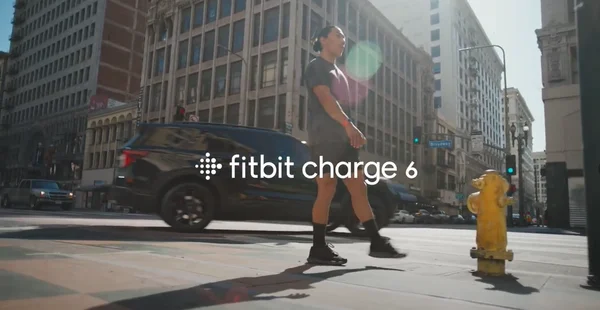 Introducing Charge 6, the latest and most advanced fitness tracker from Fitbit.
Introducing Charge 6, the latest and most advanced fitness tracker from Fitbit.
Introducing Fitbit Charge 6: Our most advanced tracker yet
 Introducing Charge 6, the latest and most advanced fitness tracker from Fitbit.
Introducing Charge 6, the latest and most advanced fitness tracker from Fitbit.
 Introducing Charge 6, the latest and most advanced fitness tracker from Fitbit.
Introducing Charge 6, the latest and most advanced fitness tracker from Fitbit.
Just a few weeks ago, we announced our latest generation of smartwatches, Sense 2 and Versa 4. These additions to our smartwatch lineup bring your wellness up a notch – and they’re available starting today.
If you’re setting your sights on fitness, Versa 4 offers features to help you stay accountable, monitor progress and reach your goals. But if you’re thinking more broadly about tracking your health and wellness, Sense 2 might be the device for you.
Here are the top features for each. Choose your own adventure:

Sense 2 and Versa 4 offer a variety of features to reach your physical and mental health goals.
1. Level up your workouts.
Sense 2 and Versa 4 include more than 40 exercise modes available on-wrist – that’s more than double we’ve ever had. With daily workout guidance, real-time stats, personalized Active Zone Minutes and even the ability to leave your phone at home and still track pace & distance with built-in GPS, you’ve got all you need to reach your fitness goals on the court…or pool…or track…or gym – you get the picture.
2. Make sense of your stress.
For all-day stress management, Sense 2 offers a first-of-its-kind continuous Body Response sensor
3. Check if you need a rest day.
Understand what’s best for your body on any given day and enhance your workout routine with a Daily Readiness Score in Fitbit Premium. When you wake up, check out your score in the Fitbit app to see if you’re ready to push it to the next level or should take a rest day based on your activity, sleep and heart rate variability.
4. Keep a pulse on your heart health.
Did you know Atrial fibrillation (AFib) affects more than 33.5 million people globally? Your smartwatch can help identify the signs of AFib through an on-wrist assessment with the electrocardiogram (ECG) app on Sense 2 as well as the Irregular Heart Rhythm Notifications on both watches.

With Sleep Profile, Premium members receive a Sleep Animal and insights into their sleep habits.
5. Learn about your ZZZs.
A good night’s sleep is a key part of your overall wellness, and our newest Premium feature, Sleep Profile, provides insights on your sleep trends over the course of each month. Wear Sense 2 or Versa 4 for at least 14 nights each month, and you’ll get a Sleep Animal with a deep analysis of your sleep style, along with personalized guidance to help improve your sleep quality.
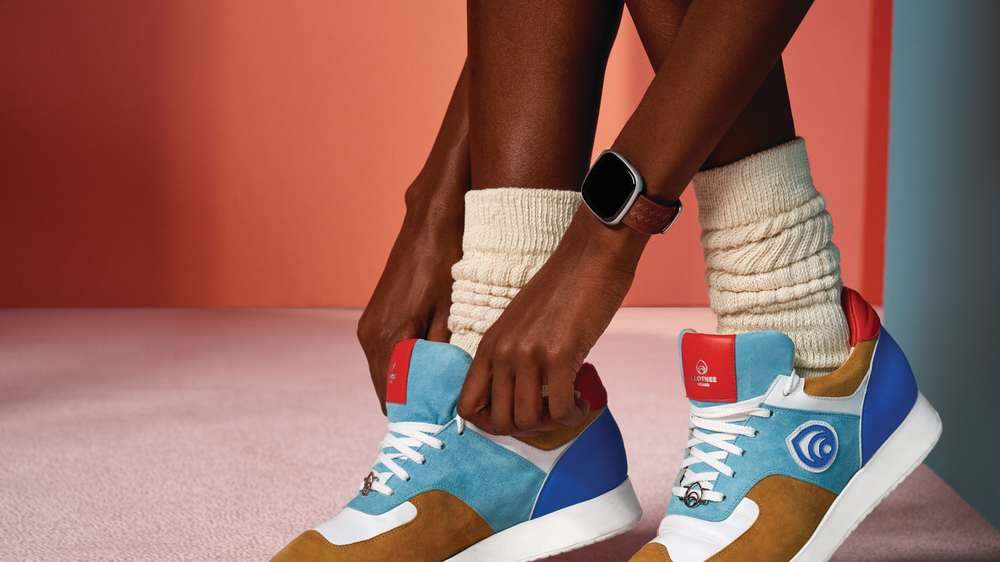
Elevate your look with the brand new collection of designer bands from Brother Vellies.
6. Amp up your style.
Switching up your day-to-day look has never been so easy and stylish. Choose from new colors of infinity, sport, woven, hook & loop, premium Horween leather or vegan leather bands—or try the new collection of braided Brother Vellies designer bands.
7. Customize your experience.
With an all-new operating system, Versa 4 and Sense 2 makes accessing the content you want easier, simpler and faster than ever before. Customizable tiles allow you to check the latest information – from your fitness stats or the weather – start an exercise and so much more with just one swipe.
8. Keep going…and going…and going…
Designed to keep up with your life, Sense 2 and Versa 4 are powered by a long battery life of more than six days. That’s almost a whole week without a charge! Leave it on all day and night, and when it’s time to recharge, fast charging gets you a full day’s worth of battery in just 12 minutes.

No matter what your week looks like, you can count on Sense 2 and Versa 4 for more than six days of battery life.
Versa 4 is now available for $229.95, and Sense 2 is now available for $299.95 (USD) at Fitbit.com, Google Store and select global retailers.
Fitbit has always been focused on helping make everyone in the world healthier. Millions of people around the globe use Fitbit every day — from checking how well they slept to doing a workout or mindfulness session in our app. Today, I’m excited to share the next generation of Fitbit wearables that combine Fitbit’s health and wellness tools with the smarts of Google — Inspire 3, Versa 4 and Sense 2. These devices are even thinner and more comfortable, so you can wear them all day and night, and you don’t have to charge them every day.
Whether you're focused on improving your mental health, gearing up to run a marathon, or starting a new health and wellness routine, you have a range of easy-to-use devices to choose from. By giving you information about your body that otherwise wouldn’t be top of mind — like your resting heart rate, oxygen saturation (SpO2), sleep trends and body’s responses to stressors — you can better understand how to manage your holistic health. Here’s a look at how each device can fit your needs:
Our newest offerings are just the start of how we can help you uncover information to improve your overall health and wellness. With the Fitbit app, you can stay motivated and on track with weekly and longitudinal stats about your activity, heart health, sleep and stress. Plus you can log your hydration, menstrual health, mood, nutrition and glucose levels all in one place. Seeing all of your metrics together can help you better understand how the actions you take each day can impact your well-being and make better decisions for your daily life.
You’ll also access important health features, including Irregular Heart Rhythm Notifications, which uses our photoplethysmography (PPG) sensor to assess your heart rhythm for signs of atrial fibrillation or AFib, for users 22 years or older with no known history of irregular heart rhythm. This feature has both FDA clearance and CE marking, and it’s compatible with a range of our heart-rate enabled devices.
Fitbit Premium, which is included with all new device purchases for six months, takes your experience even further with additions like Daily Readiness Score and Sleep Profile to dive deeper into your stats and progress, and over 1,000 workout and mindfulness sessions to keep your mind and body active.
The Fitbit app and Fitbit Premium give you essential insights, tools and motivation to help you reach your goals. The free Fitbit app brings together the stats on your wrist with tools for sleep tracking, stress management and more, to give a more complete picture of how it all fits together. With Fitbit Premium, you can take your Fitbit experience even further with features like Daily Readiness Score and Sleep Profile, more personalized insights, advanced analytics, and more than 1,000 workout and mindfulness sessions.
Whether you’re just starting out or love to dig into health stats, we have a device to fit your needs. Don’t know which device is best for you? Take our quiz to find out. We’re confident you’ll find something that makes it easier than ever for you to put your health and wellness first and empower you to be your best self along the way.
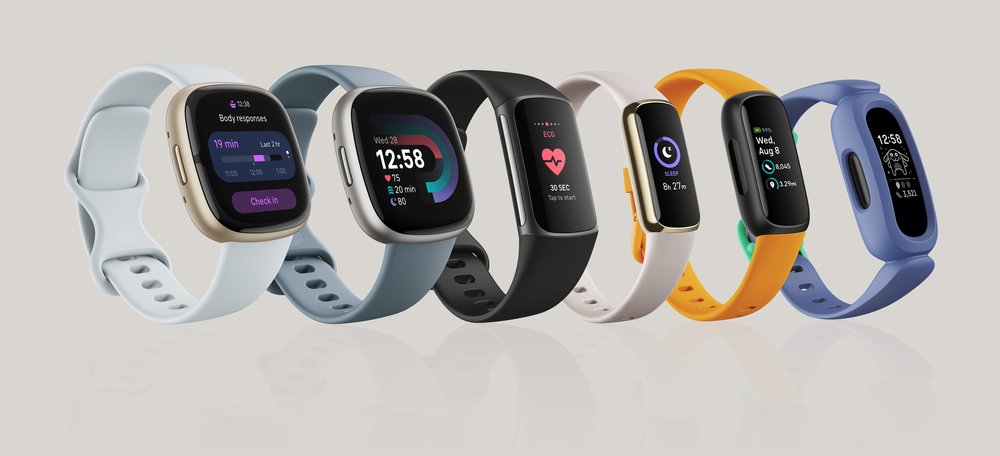
2020 may go down as the year of the video call. It’s become an indispensable tool, one we all use more than we likely would have imagined. But meeting fatigue is probably hitting you hard in the afternoon. Using the right devices can make a big difference in making video calls more enjoyable and engaging. Here are a few new ways to use Google Meet and Duo across a series of new devices to create a better meeting experience.
With Google Meet on Cast, you can turn any room in your house into your own personal conference room, taking advantage of your TV or a Smart Display. Whether you want to step away from the notifications on your laptop or phone to be more present in a meeting or you’re on mute in a larger meeting and want to concentrate on your task at hand, casting to your TV can help you be more productive and stay focused.
Meet and Cast can also pair up to simplify distance learning. Students can view their classmates and lesson plans on the big screen while working from their laptops, and teachers can get a broader view of their students on a call.
To get started, you‘ll need to have a Google account, update to the latest version of Chrome and ensure that your Chromecast device has the latest firmware installed. Google Cast functionality is available for all Meet users, and casting works on Chromecast, TVs with built-in Chromecasts and Nest displays.
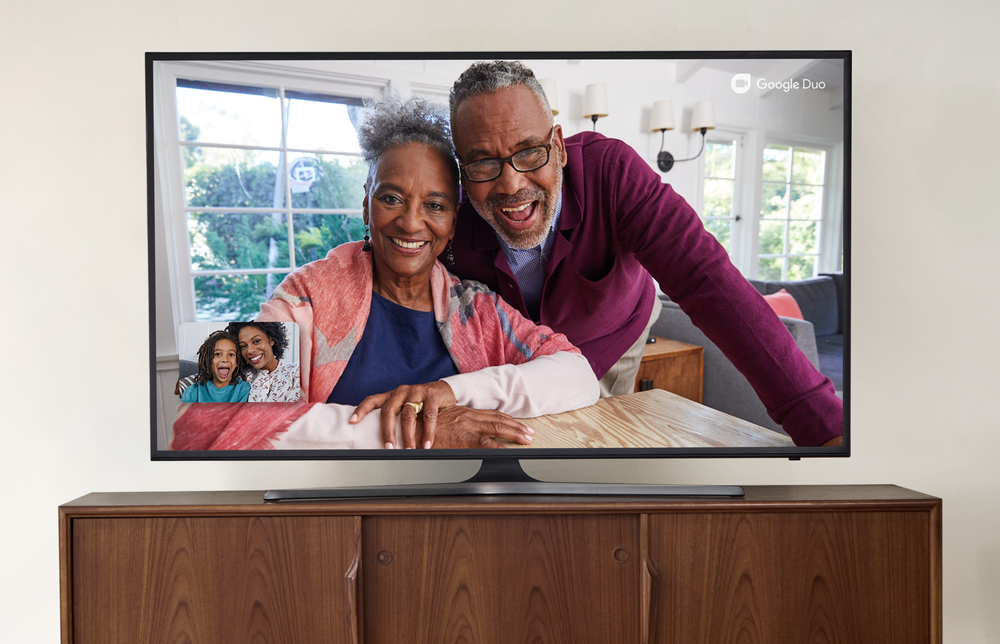
The big screen isn’t just for work meetings, though: We also want to make video calling your friends and family better, too. In an effort to bring the video calling experience to more parts of your home, Google Duo is rolling out a Beta on Android TV in the coming weeks. With Google Duo, you can initiate one-on-one and group calls from your TV, and if your TV doesn't have a camera built-in, you can simply plug in a USB camera.

Beyond TVs, Duo and Meet also work seamlessly with Nest Hub Max. You can simply say “Hey Google, join my next meeting” or “Hey Google, start a group call” and jump right into the video hands free, staying productive from a separate device on your desk.

With the Acer Chromebase and ASUS Remote Meet Kit from Google Meet hardware, you can elevate your work-from-home space into a dedicated home office. Google Meet hardware syncs automatically with Google Calendar so you can join meetings with a single touch, and is built on Chrome OS which brings over-the-air updates, peripheral support and advanced management capabilities. This frees up your laptop for more immersive meetings.
Video calls aren’t going anywhere. But with new developments from Meet + Cast, Duo, Android TV, Nest Hub Max and Google Meet hardware, they can be a little more enjoyable.
We’re working closely with customers and industry experts to shape the role of technology in meetings, and we want to make it easy for teams to work together face-to-face, anytime, anywhere. A big part of getting this right is working closely with IT, AV and facilities leaders to understand how we can solve some of their challenges which is why this week, we’re at the Integrated Systems Europe (ISE) conference in Amsterdam to learn from AV and systems integration experts about how we can help them make meetings easier.
Here's what's new.
Businesses in North America and the UK are using Jamboard to collaborate, and now teams in Europe can jam together, too. Next month, Jamboard will be available for purchase in eight additional countries: Republic of Ireland, The Netherlands, Denmark, Sweden, Norway, France, Spain and Finland.
Along with expanding Jamboard to new markets, we’re also adding an AI-powered feature called AutoDraw. AutoDraw is a new drawing tool in Jamboard that auto-detects sketches you make and pairs them with images. This gives teams the ability to make their ideas even more visual—whether you’re a creative designer working with clients or even a teacher working with students.
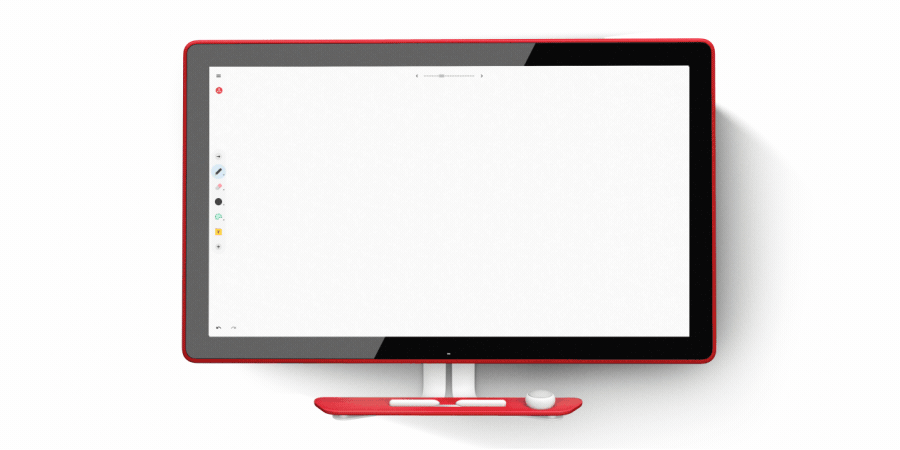
We also recently welcomed the Jamboard app as a core service in G Suite. For everything else Jamboard, check out google.com/jamboard.
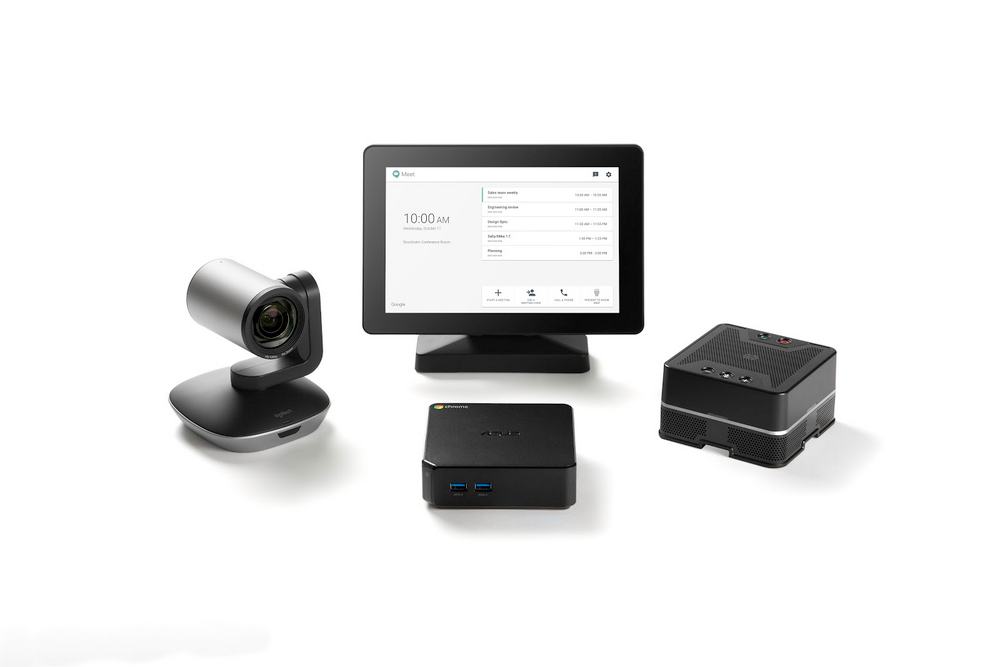
Fast video meetings are the most effective when they’re available everywhere. Today, we’re also expanding Hangouts Meet hardware—our latest meeting solution—to two additional countries: the Netherlands and Denmark, bringing the total to 14 countries.
Until now, the Hangouts Meet hardware kit has consisted of a touchscreen controller, speakermic, ASUS Chromebox and 4K sensor camera, great for capturing small rooms. While this has made it easy for some businesses to collaborate straight out of the box, we want to ensure the kit is scalable to any room size. So today, we’re adding options for larger rooms:
To learn more about Hangouts Meet hardware, check out our website.
And if you’re attending ISE, stop by our booth at B200 in Hall 15.
We sat down with TJ Varghese, senior product manager at Google, to talk about how he and his team helped create Google’s first collaborative, digital whiteboard—Jamboard—and the role technology plays in fostering creativity during, and outside of, meetings.
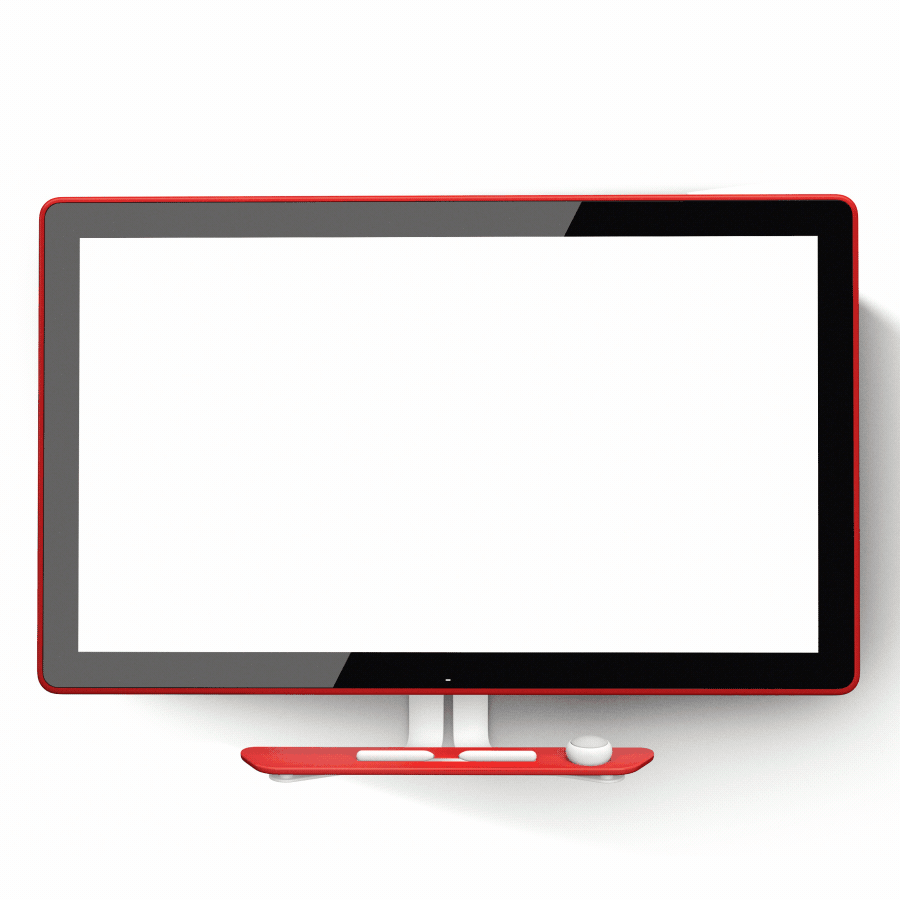
I started at Google in 2012 through the acquisition of Quickoffice and began working on the Google Docs and Drive teams. I found it interesting that team members used Docs during video conference calls to present information and convey ideas. Documents don’t always lend themselves to visual or free-form expression easily, like design discussions or walking through the flow of a process.
I am a visual thinker and prefer to sketch notes or “express” an idea by showing it. This made me think that there had to be a better way to share visual ideas across geographies when conferencing.
In 2013, Barine Tee—a fellow software engineer—and I entered a Google Hackathon competition. We tossed around submission ideas over lunch, and decided on a collaborative, drawing app for tablets that brings real-time visual brainstorming directly into meetings. We built a prototype that same day.
We came in second place to a team that built a travel-planning app. Guess you can’t beat vacations! But in spite of this, it helped us solicit early feedback on how to improve the app.
After the hackathon, Barine and I continued pursuing Jamboard on the side. We both work in New York City, but he lives in Pennsylvania and has a long commute. Because of this, we fittingly iterated on the prototype while commuting. Most might see this geography constraint as a hindrance, but it actually was the opposite for us. We collaborated through the app despite being in different states. It forced us to fix bugs faster because we depended on the app to move our idea along.
It was around this same time that Google created an internal team focused on the future of work. The rise of remote workers and technologies like machine learning in the workplace are creating new opportunities for collaboration and creativity tools. Jamboard felt like a natural fit for the project. Over the course of 3 years, our project and team grew from two employees to more than 40.
We continued to focus on solving real problems for teams. Users shared feedback that they needed a bigger screen for more natural expression and easier workflows, so we evolved our solution to move beyond just a tablet app and began to think about hardware.
Hardware is hard, but we knew that in order to make an effective digital whiteboard, it has to feel like you’re drawing on an actual whiteboard—a tool with very low latency, or lag, when you write. To make this a reality, we went back to the drawing board and built Jamboard as a hardware appliance from the ground up, baking design, software and hardware into one experience.
With G Suite, we’re focused on helping teams maximize their creative output, and unveiling work that historically lives within the confines of formal presentations and email attachments. That’s why we invented cloud-first tools like Docs and Slides, so you can collaborate instantly from anywhere. And Hangouts Meet and Chat, so you can share your idea face-to-face or through group messaging.
With Jamboard, you can sketch ideas as they come to you and watch your colleagues tackle a problem no matter where they are, as they would on a whiteboard in a single room. And companies are already using Jamboard in creative ways. For example, Instrument uses Jamboard to create and present creative projects to clients, and larger companies, like Dow Jones and Spotify, use Jamboard in their workflows to make bring their ideas to life and make meetings more effective.
I think we're headed toward a future where your productivity tools become intuitive and intelligent enough to help you go from ideas to action quickly. We think machine intelligence can help teams eliminate time spent on mundane tasks, like manually scheduling meetings. But it can also help surface and format content, so we spend more time executing on ideas and making them better.
These are exciting opportunities that we look forward to exploring with Jamboard.
We sat down with TJ Varghese, senior product manager at Google, to talk about how he and his team helped create Google’s first collaborative, digital whiteboard—Jamboard—and the role technology plays in fostering creativity during, and outside of, meetings.

I started at Google in 2012 through the acquisition of Quickoffice and began working on the Google Docs and Drive teams. I found it interesting that team members used Docs during video conference calls to present information and convey ideas. Documents don’t always lend themselves to visual or free-form expression easily, like design discussions or walking through the flow of a process.
I am a visual thinker and prefer to sketch notes or “express” an idea by showing it. This made me think that there had to be a better way to share visual ideas across geographies when conferencing.
In 2013, Barine Tee—a fellow software engineer—and I entered a Google Hackathon competition. We tossed around submission ideas over lunch, and decided on a collaborative, drawing app for tablets that brings real-time visual brainstorming directly into meetings. We built a prototype that same day.
We came in second place to a team that built a travel-planning app. Guess you can’t beat vacations! But in spite of this, it helped us solicit early feedback on how to improve the app.
After the hackathon, Barine and I continued pursuing Jamboard on the side. We both work in New York City, but he lives in Pennsylvania and has a long commute. Because of this, we fittingly iterated on the prototype while commuting. Most might see this geography constraint as a hindrance, but it actually was the opposite for us. We collaborated through the app despite being in different states. It forced us to fix bugs faster because we depended on the app to move our idea along.
It was around this same time that Google created an internal team focused on the future of work. The rise of remote workers and technologies like machine learning in the workplace are creating new opportunities for collaboration and creativity tools. Jamboard felt like a natural fit for the project. Over the course of 3 years, our project and team grew from two employees to more than 40.
We continued to focus on solving real problems for teams. Users shared feedback that they needed a bigger screen for more natural expression and easier workflows, so we evolved our solution to move beyond just a tablet app and began to think about hardware.
Hardware is hard, but we knew that in order to make an effective digital whiteboard, it has to feel like you’re drawing on an actual whiteboard—a tool with very low latency, or lag, when you write. To make this a reality, we went back to the drawing board and built Jamboard as a hardware appliance from the ground up, baking design, software and hardware into one experience.
With G Suite, we’re focused on helping teams maximize their creative output, and unveiling work that historically lives within the confines of formal presentations and email attachments. That’s why we invented cloud-first tools like Docs and Slides, so you can collaborate instantly from anywhere. And Hangouts Meet and Chat, so you can share your idea face-to-face or through group messaging.
With Jamboard, you can sketch ideas as they come to you and watch your colleagues tackle a problem no matter where they are, as they would on a whiteboard in a single room. And companies are already using Jamboard in creative ways. For example, Instrument uses Jamboard to create and present creative projects to clients, and larger companies, like Dow Jones and Spotify, use Jamboard in their workflows to make bring their ideas to life and make meetings more effective.
I think we're headed toward a future where your productivity tools become intuitive and intelligent enough to help you go from ideas to action quickly. We think machine intelligence can help teams eliminate time spent on mundane tasks, like manually scheduling meetings. But it can also help surface and format content, so we spend more time executing on ideas and making them better.
These are exciting opportunities that we look forward to exploring with Jamboard.
Good ideas become great ones when you work together with your teammates. But as teams become increasingly distributed, you need tools that spur visual creativity and collaboration—a way to sketch out ideas, rev on them with colleagues no matter where they may be in the world and make them real. That’s where Jamboard, our cloud-based, collaborative whiteboard, can help. Starting today, Jamboard is available for purchase in the United States.
We tested Jamboard with enterprise early adopters like Dow Jones, Whirlpool and Pinterest, who shared how Jamboard helped their businesses collaborate more efficiently and bring the power of the cloud into team brainstorms.
Shaown Nandi, chief information officer at Dow Jones, saw his teams became more hands-on in creative sessions thanks to Jamboard. “Jamboard breaks down barriers to interactive, visual collaboration across teams everywhere,” said Nandi. “It’s the perfect anchor for a meeting and encourages impromptu, productive sessions. We can easily add any content to the Jamboard to capture great ideas from everyone. We immediately saw the benefits.”
Jamboard is the perfect anchor for a meeting. We can easily add content and capture great ideas from everyone.Shaown Nandi Chief Information Officer at Dow Jones
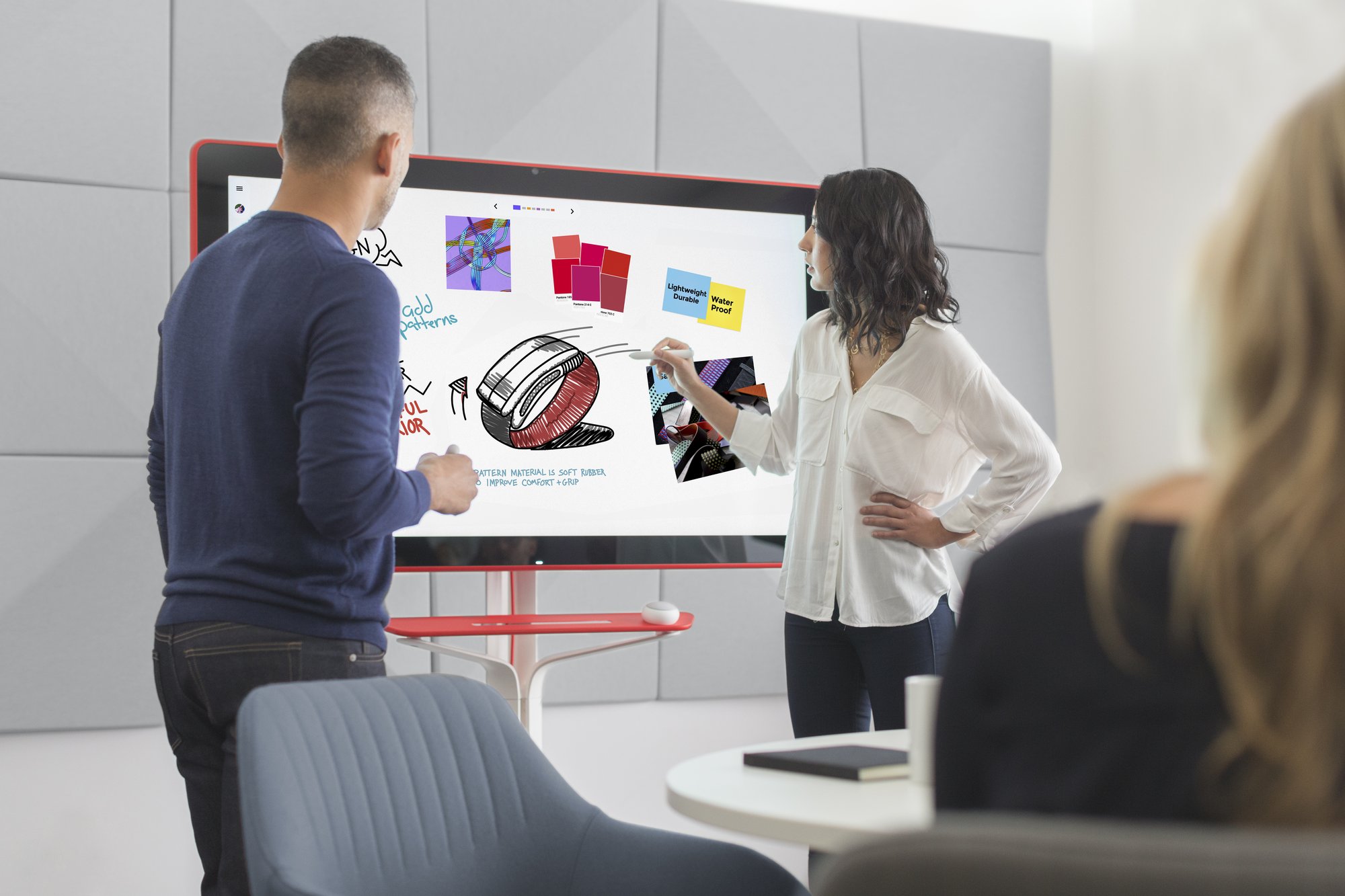
We received great suggestions from customers on how to make Jamboard even better, such as adding a greater range of secure Wi-Fi network configurations so it’s easier to jam in different business settings. Customers also confirmed how important high speed touch is when using a digital whiteboard, and we’re using the Nvidia Jetson TX1 embedded computer to make sure Jamboard’s 4K touchscreen delivers a responsive experience. Starting today, you can purchase a Jamboard in three colors: cobalt blue, carmine red and graphite grey.
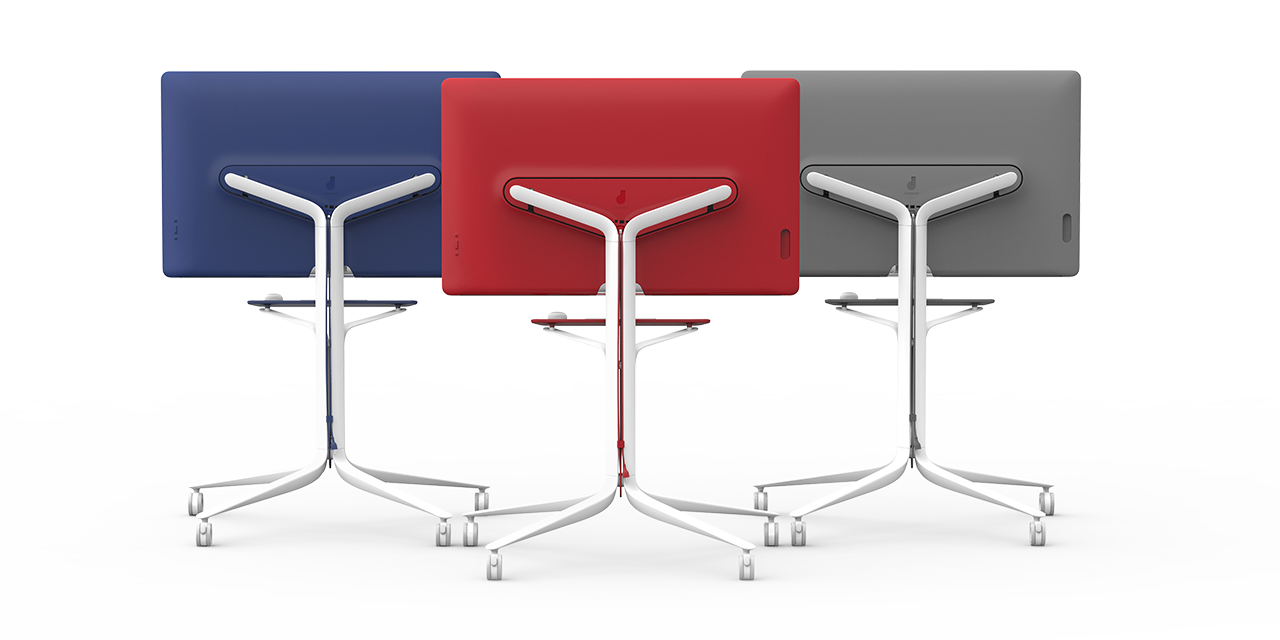
You can purchase Jamboard for $4,999 USD, which includes two styluses, an eraser and a wall mount. We’re also running a promotion—if you order on or before September 30, 2017, you’ll receive $300 off of the annual management and support fee for the first year, as well as a discount on the optional rolling stand.
Keep in mind that a G Suite plan is required to use Jamboard so that you can access files from Drive, use them in your brainstorms and come back to your work later. Plus, the Jamboard mobile companion apps can be used remotely so you can work on the go. Also, we’re teaming up with BenQ to handle fulfillment, delivery and support. Check out pricing details below.
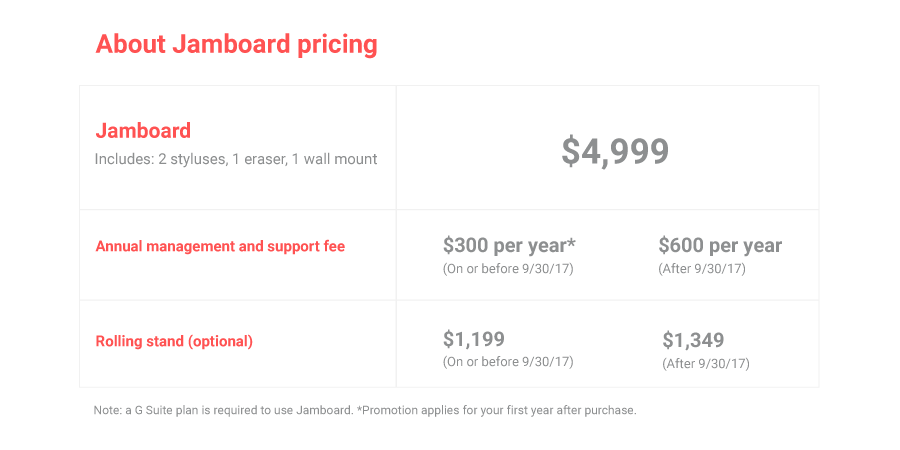
Jamboard is available to G Suite customers in the U.S. to start, and will be available for purchase in the U.K. and Canada this summer, with more countries becoming available over time. Contact your Google Cloud sales rep or visit google.com/jamboard to learn more about how you can start jamming with colleagues today.
If you’re a current G Suite admin, check out this post for more information.
Good ideas become great ones when you work together with your teammates. But as teams become increasingly distributed, you need tools that spur visual creativity and collaboration—a way to sketch out ideas, rev on them with colleagues no matter where they may be in the world and make them real. That’s where Jamboard, our cloud-based, collaborative whiteboard, can help. Starting today, Jamboard is available for purchase in the United States.
We tested Jamboard with enterprise early adopters like Dow Jones, Whirlpool and Pinterest, who shared how Jamboard helped their businesses collaborate more efficiently and bring the power of the cloud into team brainstorms.
Shaown Nandi, chief information officer at Dow Jones, saw his teams became more hands-on in creative sessions thanks to Jamboard. “Jamboard breaks down barriers to interactive, visual collaboration across teams everywhere,” said Nandi. “It’s the perfect anchor for a meeting and encourages impromptu, productive sessions. We can easily add any content to the Jamboard to capture great ideas from everyone. We immediately saw the benefits.”
Jamboard is the perfect anchor for a meeting. We can easily add content and capture great ideas from everyone.Shaown Nandi Chief Information Officer at Dow Jones

We received great suggestions from customers on how to make Jamboard even better, such as adding a greater range of secure Wi-Fi network configurations so it’s easier to jam in different business settings. Customers also confirmed how important high speed touch is when using a digital whiteboard, and we’re using the Nvidia Jetson TX1 embedded computer to make sure Jamboard’s 4K touchscreen delivers a responsive experience. Starting today, you can purchase a Jamboard in three colors: cobalt blue, carmine red and graphite grey.

You can purchase Jamboard for $4,999 USD, which includes two styluses, an eraser and a wall mount. We’re also running a promotion—if you order on or before September 30, 2017, you’ll receive $300 off of the annual management and support fee for the first year, as well as a discount on the optional rolling stand.
Keep in mind that a G Suite plan is required to use Jamboard so that you can access files from Drive, use them in your brainstorms and come back to your work later. Plus, the Jamboard mobile companion apps can be used remotely so you can work on the go. Also, we’re teaming up with BenQ to handle fulfillment, delivery and support. Check out pricing details below.

Jamboard is available to G Suite customers in the U.S. to start, and will be available for purchase in the U.K. and Canada this summer, with more countries becoming available over time. Contact your Google Cloud sales rep or visit google.com/jamboard to learn more about how you can start jamming with colleagues today.
If you’re a current G Suite admin, check out this post for more information.
Good ideas become great ones when you work together with your teammates. But as teams become increasingly distributed, you need tools that spur visual creativity and collaboration—a way to sketch out ideas, rev on them with colleagues no matter where they may be in the world and make them real. That’s where Jamboard, our cloud-based, collaborative whiteboard, can help. Starting today, Jamboard is available for purchase in the United States.
We tested Jamboard with enterprise early adopters like Dow Jones, Whirlpool and Pinterest, who shared how Jamboard helped their businesses collaborate more efficiently and bring the power of the cloud into team brainstorms.
Shaown Nandi, chief information officer at Dow Jones, saw his teams became more hands-on in creative sessions thanks to Jamboard. “Jamboard breaks down barriers to interactive, visual collaboration across teams everywhere,” said Nandi. “It’s the perfect anchor for a meeting and encourages impromptu, productive sessions. We can easily add any content to the Jamboard to capture great ideas from everyone. We immediately saw the benefits.”
Jamboard is the perfect anchor for a meeting. We can easily add content and capture great ideas from everyone.
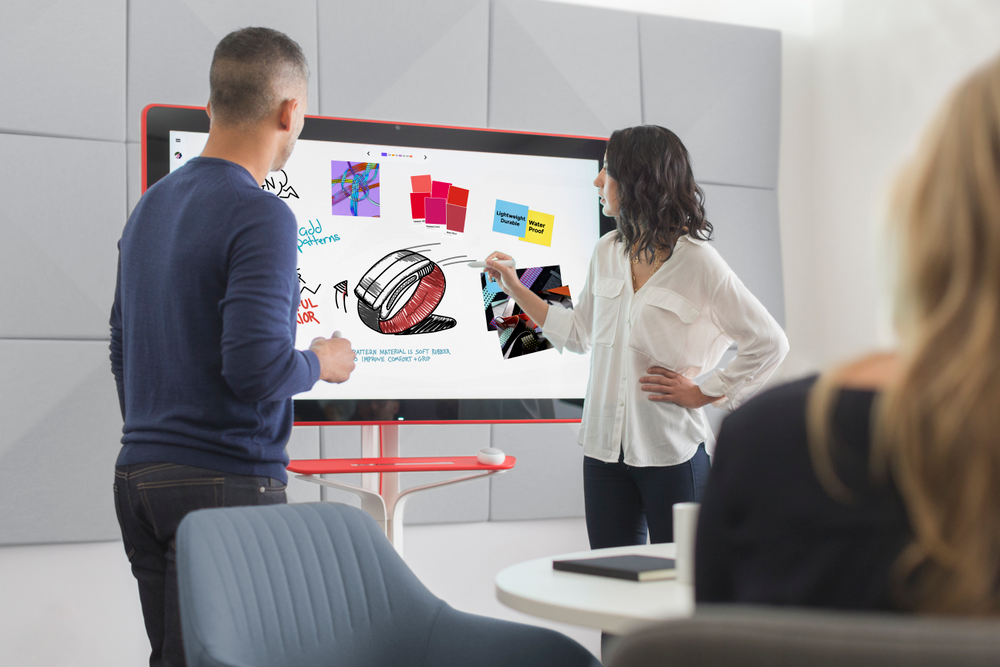
We received great suggestions from customers on how to make Jamboard even better, such as adding a greater range of secure Wi-Fi network configurations so it’s easier to jam in different business settings. Customers also confirmed how important high speed touch is when using a digital whiteboard, and we’re using the Nvidia Jetson TX1 embedded computer to make sure Jamboard’s 4K touchscreen delivers a responsive experience. Starting today, you can purchase a Jamboard in three colors: cobalt blue, carmine red and graphite grey.

You can purchase Jamboard for $4,999 USD, which includes two styluses, an eraser and a wall mount. We’re also running a promotion—if you order on or before September 30, 2017, you’ll receive $300 off of the annual management and support fee for the first year, as well as a discount on the optional rolling stand.
Keep in mind that a G Suite plan is required to use Jamboard so that you can access files from Drive, use them in your brainstorms and come back to your work later. Plus, the Jamboard mobile companion apps can be used remotely so you can work on the go. Also, we’re teaming up with BenQ to handle fulfillment, delivery and support. Check out pricing details below.
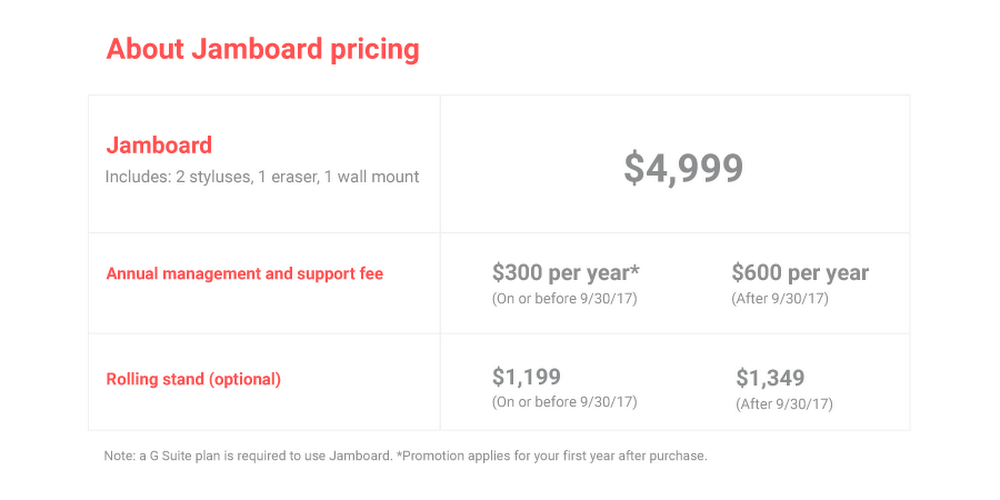
Jamboard is available in the U.S. to start, and will be available for purchase in the U.K. and Canada this summer, with more countries becoming available over time. Contact your Google Cloud sales rep or visit google.com/jamboard to learn more about how you can start jamming with colleagues today.
If you’re a current G Suite admin, check out this post for more information.